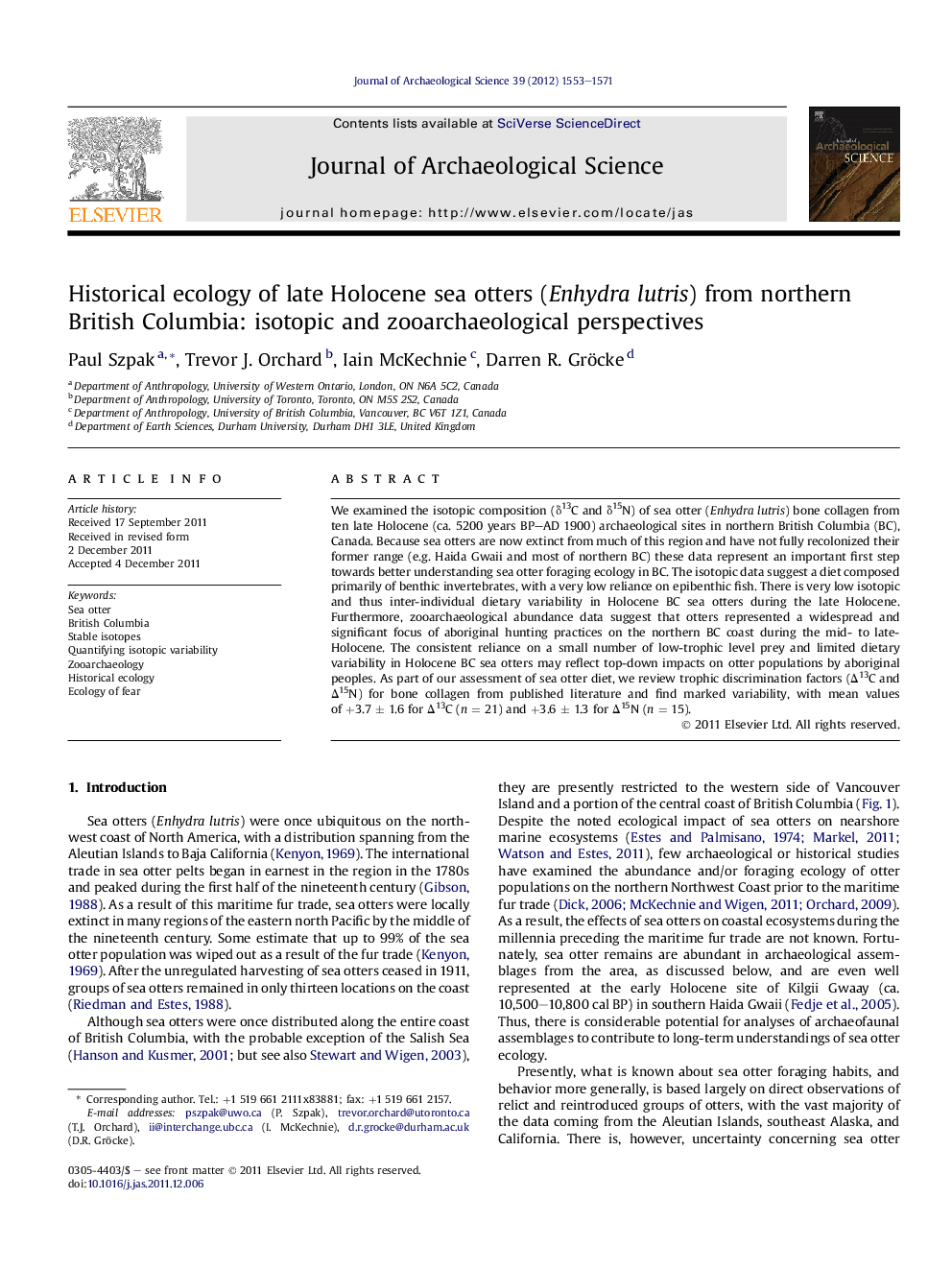| Article ID | Journal | Published Year | Pages | File Type |
|---|---|---|---|---|
| 1035773 | Journal of Archaeological Science | 2012 | 19 Pages |
We examined the isotopic composition (δ13C and δ15N) of sea otter (Enhydra lutris) bone collagen from ten late Holocene (ca. 5200 years BP–AD 1900) archaeological sites in northern British Columbia (BC), Canada. Because sea otters are now extinct from much of this region and have not fully recolonized their former range (e.g. Haida Gwaii and most of northern BC) these data represent an important first step towards better understanding sea otter foraging ecology in BC. The isotopic data suggest a diet composed primarily of benthic invertebrates, with a very low reliance on epibenthic fish. There is very low isotopic and thus inter-individual dietary variability in Holocene BC sea otters during the late Holocene. Furthermore, zooarchaeological abundance data suggest that otters represented a widespread and significant focus of aboriginal hunting practices on the northern BC coast during the mid- to late-Holocene. The consistent reliance on a small number of low-trophic level prey and limited dietary variability in Holocene BC sea otters may reflect top-down impacts on otter populations by aboriginal peoples. As part of our assessment of sea otter diet, we review trophic discrimination factors (Δ13C and Δ15N) for bone collagen from published literature and find marked variability, with mean values of +3.7 ± 1.6 for Δ13C (n = 21) and +3.6 ± 1.3 for Δ15N (n = 15).
► Sea otters are consistently important components of northern coastal BC faunal assemblages. ► Stable isotope data suggest Holocene sea otters in northern BC fed primarily on benthic invertebrates. ► The isotopic data are not consistent with significant consumption of nearshore fish by sea otters. ► BC sea otters are characterized by very little inter-individual isotopic variability. ► The isotopic data are consistent with sea otters at low population densities, which may be related to human hunting.
